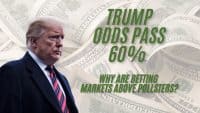 In a speech in Hong Kong, Chicago Fed President Charles Evans laid out his current thinking on the U.S. economy. The money quote comes in his final two sentences:
In a speech in Hong Kong, Chicago Fed President Charles Evans laid out his current thinking on the U.S. economy. The money quote comes in his final two sentences:
I don’t think we should be in a mode where we are waiting to see what the next few data releases bring. We are well past the threshold for additional action; we should take that action now.
Evans’s prescription for action stems from his belief that the Fed’s dual mandate of price stability and low unemployment has tipped too far in favor of price stability:
Even absent any negative shocks, such tepid growth rates would close the large existing resource gaps only very gradually. Indeed, I expect that we will face unemployment well above sustainable levels for some time to come.
Not so with inflation:
For a number of reasons, I don’t foresee much risk that inflation will rise above reasonable tolerance levels relative to this objective. First, we see evidence of low expectations for inflation and growth in the today’s historically low Treasury yields. If there were warning signs of dangerous inflationary pressures, the ten-year rate wouldn’t be in the neighborhood of 1-3/4 percent! Second, even with the latest increase in oil prices, energy and commodity prices remain well off their recent peaks as the global outlook dims. Third, as I just noted, the output gap remains large and is likely to close only slowly. In this economic environment, wage pressures are practically nonexistent. And it is hard to envision how major persistent inflation pressures will emerge without a parallel increase in wage costs. … Fourth, inflationary dynamics depend in large part on the momentum generated by people’s expectations of future inflation; currently, inflation expectations are well anchored, which will tend to keep inflation from moving either up or down.
To boost employment (and close the output gap), Evans suggests tying the policy rate to unemployment:
I think the Fed should make it clear that the federal funds rate will not be increased until the unemployment rate falls below 7 percent. Knowing that rates would stay low until significant progress is made in reducing unemployment would reassure markets and the public that the Fed would not prematurely reduce its accommodation.
He also sets a limit of 3% on inflation. That is, he urges that the Fed make every effort to lower unemployment to 7% or less as long as inflation remains at or below 3%. Evans says:
To me, a symmetric inflation goal and a balanced approach to policy mean that if we are missing our employment mandate by a large amount, but are close to our inflation target, then we should be willing to undertake policies that could substantially reduce the employment gap even if they run the risk of a modest, transitory rise in inflation that remains within a reasonable tolerance range of our target. I believe such actions, such as the 7/3 threshold policy I have been advocating, would produce smaller net losses relative to our dual mandate goals than would current policy.
Evans is the second Fed president to suggest letting inflation rise above the current Fed target of 2%. The other was Minneapolis Fed President Narayana Kocherlakota, who said that allowing inflation to rise more than 2% “could well be part of an appropriate policy.”
Evans’s speech is available here.
Paul Ausick
Sponsored: Attention Savvy Investors: Speak to 3 Financial Experts – FREE
Ever wanted an extra set of eyes on an investment you’re considering? Now you can speak with up to 3 financial experts in your area for FREE. By simply clicking here you can begin to match with financial professionals who can help guide you through the financial decisions you’re making. And the best part? The first conversation with them is free.Click here to match with up to 3 financial pros who would be excited to help you make financial decisions.
Thank you for reading! Have some feedback for us?
Contact the 24/7 Wall St. editorial team.


